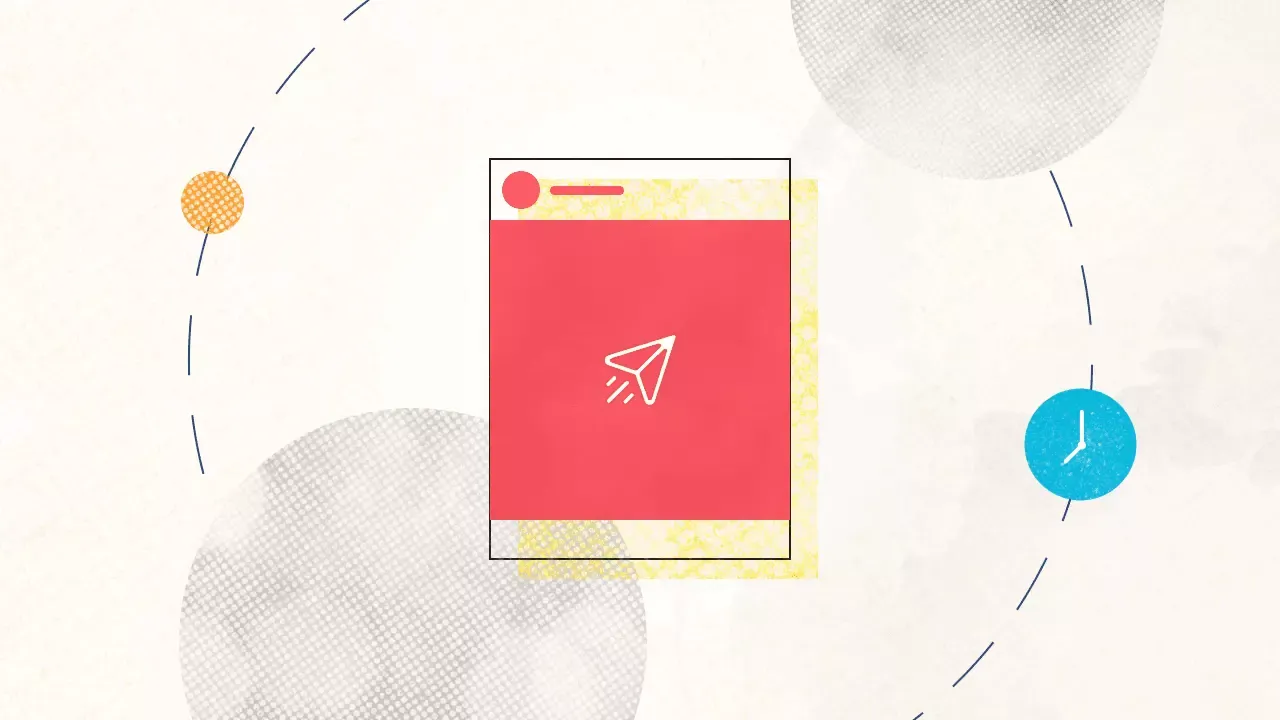Conversion rate optimization is the goal of every business. Whether they actively pursue it or merely leave it mostly to chance, making more money is what running a business ultimately boils down to.
A useful tactic appreciated by customers is offering them a free trial. This gives them the chance to get to know your product and determine whether they want to keep using it (and paying for it) in the future.
The question that thus arises is how to convert these free trial users into paying, preferably long-term, customers?
Let’s first take a look at five ways to boost your free trial signup rates as well, and then how you can ensure that those who have tried your product continue on as paying customers.
1. Display The Time Limit
2. Don’t Ask For Payment Details
3. Ask For Minimal Information
4. Offer Live Support
5. Be Clear About The Price
6. Offer a Product Demo
7. Offer An Extensive Knowledge Base
8. Create An Academy For Everyone
9. Demonstrate Some Power
10. Limit Feature Access
11. Pay Them To Convert
You can directly jump to a section of your choice or keep scrolling.
1. Display The Time Limit
Free trials need to be limited to a specific amount of time. How long that should be will depend on several factors.
The goal of a free trial is to help a user reach what is known as the “aha!” moment. That’s when they realize just what the benefits of using the product are and that they can’t imagine a future without it. This is when a trial user will be considered activated.
Shorter, 7-day trials are great for adding a sense of urgency. Longer, 14-day trials work better for products that are more complex and can afford to have a longer sales cycle.
The length of the free trial should clearly be highlighted on your landing pages. This will help the user make a more informed decision and understand what is expected of them in a certain amount of time.
Take a look at Ultimate Meal Plans, where they clearly note that their free trial is valid for 14 days. It gives potential customers plenty of time to get to know the product and see some benefits from using it.
This will make them much more likely to stick around, as they will have experienced the “aha!” moment – using the app makes their lives easier, helps them eat healthier, and can fit into their lifestyle very well.
Your own free trial needs to provide enough time for this to happen too.
2. Don’t Ask For Payment Details
If you want to convert someone from a free to a paid user, first make sure you aren’t asking too much when you offer them a free trial.
Something as simple as demanding payment details, even if you are not actually going to charge someone’s credit card immediately, can be quite the turn-off.
First of all, sharing a credit card number demands a huge amount of trust. People who tend to forget to end their free trials will be additionally hesitant, as they certainly don’t want to rack up a potentially unnecessary expense.
You can circumvent the entire dilemma by forgoing the payment detail demand when someone signs up for a free trial. If they want to keep using the product, all you have to do is limit their access and remind them their account is still there if they are now ready to become a paid user.
Time Tackle is a good example of a company that not only offers free trials with no strings attached but also clearly says so right under the CTA.
There is no unpleasant surprise waiting in store. You won’t be greeted by an “enter payment information” window just as you’re expecting to start using the product.
Jasper is a great example of a product that ends up disappointing you. You can’t see what it actually does without providing your card details. If this makes you feel uncomfortable (as it often does), the brand will lose a potential paid customer.
3. Ask For Minimal Information
Along the same lines, make sure you don’t demand too much personal information from your customers either. A name, an email address, and a password is all you need.
Your marketing team would, of course, benefit from a bunch of other information too. They will have plenty of opportunities to gather it once the user starts using your product, and especially once you convert them to a paid user.
In fact, after a customer has been testing out your product, they will usually be happy to provide useful feedback and tell you what they liked and didn’t like. So, save your extensive questionnaires for later, and stick to the basics when you sign users up for free trials.
Aura does this well by asking for nothing more than two pieces of information. No credit card is required, and the signup process is as easy as it can be. This will ensure they get plenty of trial users whom they can further target and lead down their funnel.
4. Offer Live Support
Once someone has started trialing your product, you want to give them as much support as you possibly can. After all, you have a limited conversion window: as long as they are testing the tool out, you can reach them easily, and your marketing messages will be more effective.
If a user has questions about a feature or is unsure how to do something, the quicker they can reach you, the better. Offering live chat support can ensure they always feel heard. Plus, it gives your sales team a chance to communicate with a client directly early on in the customer lifecycle.
You will, however, need to make sure to offer assistance first and pitch later. Keep in mind that quality support is a conversion tactic itself.
Take a look at how Optimal Workshop has implemented their chat. They have a chat widget easily accessible on every page. However, as you navigate the website, the AI is triggered in different ways and offers specific assistance. For example, when you get to the pricing page, the chatbot will ask you if you have any questions about their pricing and if you would like to hear more about the different plans.
5. Be Clear About The Price
When offering a free trial, you also need to make sure that the pricing you demand after it expires is clearly listed and that there are no hidden costs. If a customer expects to be paying a certain amount but is then also taxed with additional fees, they will certainly feel let down. In fact, it might drive them to quickly cancel their paid subscription.
You should also display your prices on a monthly and a yearly basis and demonstrate how much a customer will save if they sign up for a longer period of time. This will boost your bottom line and give you plenty of ready funds to further develop your product.
Moz does this well on their pricing page. They display how much you will save in a year, even when you’re looking at the monthly subscription plan.
Their main competitor, Ahrefs, does something similar but less effectively, as you have to switch between tabs to see the savings you can expect. What they also don’t tell you, at least not high enough on the page, is that their reseller, Fast Spring, also applies additional taxes, depending on where you live (which is something yours truly recently learned to their own detriment, and which has made me reconsider my subscription model as well).
6. Offer a Product Demo
A free trial is one thing, but if you also offer free product demos, you’ll make the offer even sweeter.
The best time to offer a demo is after someone has signed up for the trial. You don’t want them to see the product for the first time as you are demoing it. Ideally, they will already have had time to get to know it and are now ready to take their knowledge and understanding even further.
Make sure that your demos are quick and to the point. Get to know the user first, and don’t give the same demo to everyone. Tailor it to the specific needs and requirements of each individual. Remember: they need to get to the “aha!” moment, and they need to understand the value and the benefits of investing in your product over the longer term.
Demos will be especially useful for products that may need a bit more time to set up: accounting, finance, digital marketing, and so on.
Convert has done several things right. First, they stand out with their 15-day (as opposed to the usual 14-day) trial, they demand no credit card info, and they offer extensive support. They also offer a demo: and they do a great job of explaining what you can expect to get from it.
This gives customers plenty of time to prepare and to understand what they will be served during the call.
7. Offer An Extensive Knowledge Base
Your customers should also be able to access a lot of information even when you are not available to answer questions or demonstrate how to get something done. A lot of them will want to pursue important information on their own time and at their own pace.
The best way to do this is to create an extensive online knowledge base. It will serve to:
- Sway your current users to become paid customers
- Give you an SEO boost
- Perhaps even convince someone to become a paid customer right off the bat (without testing out the product)
Take a look at Ontraport. They’ve done a marvelous job at organizing all the various (and extensive) resources they have. They have a blog, a podcast, templates, and guides; plus, they’ve also provided plenty of tools that will help a business achieve the success they are aiming for.
When compiling your own resource base, make sure you carefully address the questions your users are asking. Whether you gather them during the demos or through the live chat, you want to be as helpful as possible. Tackling real-life queries will be your best option.
8. Create An Academy For Everyone
You can also take your knowledge base even further and create what is essentially an online course on using your tool to achieve a certain result.
This should be done in a video format and, ideally, made available to everyone. Gating your content can work, too. You can provide access to your paid customers only and market the access to this course as one of the benefits of paying a certain price.
On the other hand, if you can demonstrate the benefits of using your product to a wider audience, you will be much more likely to convert more people simply due to the volume of views you can expect.
Ahrefs, which we have just mentioned in a rather poor light, has one of the best online academies in the industry. When they launched its first installment, Blogging for Business, access was free for a limited time, and they later gated access to the course.
Today, they offer several awesome resources completely free of charge. The knowledge they are able to share is certainly boosting their conversion rate.
They have, on the other hand, removed the free trial option. You no longer even have a choice to see the tool in action unless you watch some of their content or pay for a month’s worth of access.
9. Demonstrate Some Power
If you don’t have the manpower for demos or for creating a full-blown online course that will help you turn some of your free users into paid customers, you can always stage one.
If you can create a sandbox or provide limited access to certain features and show your visitors what your tool can do – for free – they will certainly be very interested in seeing what else there is on offer.
Affinda does this with their invoice extractor. Not only are you able to solve an actual problem with it, but you will certainly want to explore some of the solution’s other features as well. This page will also happen to rank for a very lucrative keyword. And on top of all that, it’s immensely valuable to users as a free, easy-to-use resource.
Oxygen does something similar with their builder. While they don’t offer a free trial, you get to see what the builder can do in real-time. Access to the backend is limited, and you won’t be able to start creating your own website with it, but you can get a very clear sense of the power that lies under the hood.
This tactic eliminates the need to involve humans in the demonstration process, and you can again provide your users with the time and the space to test things out on their own.
10. Limit Feature Access
To take full advantage of a free trial, you can also consider doing something counterintuitive: limiting a user’s access. Yes, you certainly want to demonstrate what it is you can do. But if you simply whet someone’s appetites, chances are they will want to come back and see what else is on the menu.
Make sure that you select your main selling features to demo or the ones that will appear to the largest segment of your audience. Also, make it perfectly clear what else they can expect once they become paid customers.
Chargebee does this, for example. They offer a free sandbox, where you can set up and configure a billing process, but you won’t be able to collect payments. It’s a great way to demo the process and the power of their solution without having to give full access to the entirety of the tool.
You may do this simply by requesting a code to unlock certain parts of the tool and locking the features you don’t wish to serve in the free demo.
11. Pay Them To Convert
Finally, you can consider a highly innovative method to get your users to pay a monthly or an annual subscription: pay them to do so.
This is a tactic that is used by Izooto, and it’s not just original – it’s ingenious.
Instead of trying to convert a freemium user, which can demand a lot of effort and resources the brand has chosen to invest elsewhere, they offer a monetization solution (and a share of revenue) to their paid users.
They claim that nearly 90% of their users take the plunge and are quickly turned into a set of users that generates revenue.
This is a win-win situation that may not be available to everyone. You should carefully consider what you are able to offer your users as an incentive to convert. How are they promoting your product, and how are they impacting your bottom line?
It’s certainly an unorthodox tactic, but perhaps one that will help you think outside the box and discover a new method to convert free users into paid ones.
Final Thoughts
Converting a free trial user into a paid customer can be quite the effort, as you need to help them see your product as valuable and as worth the price you are asking for it. All of these 11 tactics can help you get there. However, not all of them will work for everyone.
Before you implement any of them, make sure to carefully analyze your target audience, as well as your current set of free trial users and those who have stuck around and paid for a subscription. What is the common denominator, if any, that you can identify?
By working with the data and behaviors you are already privy to, you can achieve a much better result in less time.
Looking for a social analytics tool to track the performance of your marketing campaign? Try Statusbrew. With several ready-to-use reporting templates and total flexibility to customize these reports, Statusbrew will help you determine whether your social initiatives have led to positive results and where adjustments are needed to strengthen your marketing campaigns - in no time.
Statusbrew is an all in one social media management tool that supports Facebook, Instagram, Twitter, Linkedin, YouTube, and even Google My Business.




Explore the Statusbrew range of social media tools
Cancel anytime!